How to grow cilantro
Discover how to grow cilantro from seed or cuttings – and how to harvest it to get the most out of this versatile, aromatic ingredient
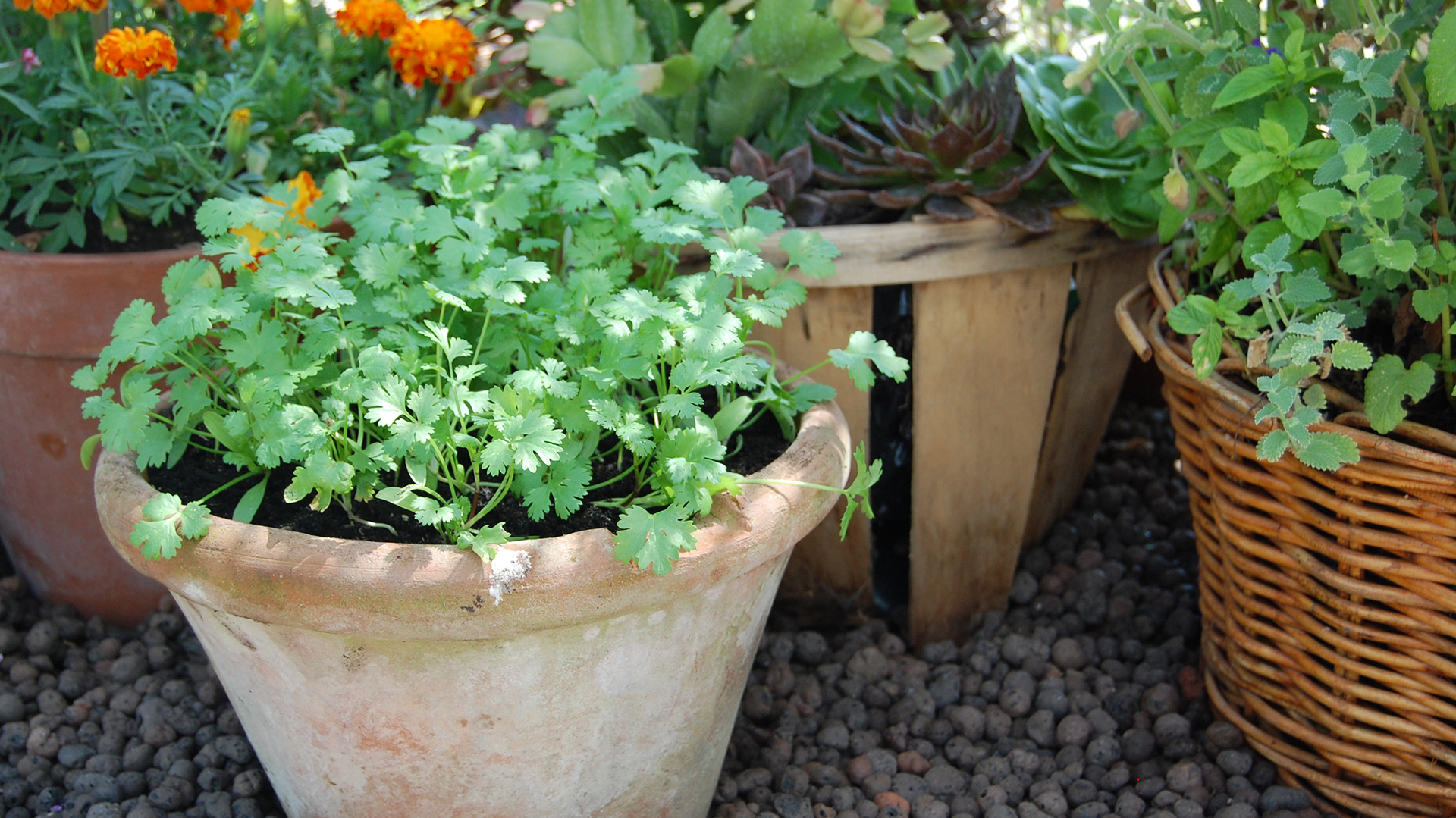

If you’re a keen cook, then you should learn how to grow cilantro – also known as coriander – as it is one of the most widely used herbs in the world. It is also one of the oldest, and many ancient cultures valued cilantro for both its complex flavor and perceived medicinal properties.
See: Kitchen garden ideas – easy ways to get started
Cilantro is a hugely versatile herb, as every part of the plant can be utilized for cooking – so learning how to grow cilantro will enable you to harvest the whole crop, from root to flower. ‘Growing in close proximity to the kitchen you can taste a plant at all stages of its development: cilantro’s leaves, flowers, green seeds, and dry seeds all taste very different,’ says three-Michelin starred chef Mauro Colagreco in The Garden Chef.
Once you know how to grow cilantro successfully, it will quickly become a staple ingredient in everything from salads and sauces to soups and curries.
How to grow cilantro from seed

Learning how to grow cilantro from seed is the best way to ensure a reliable, quick crop. But you need to sow your seeds at the right time, as cilantro doesn’t thrive in the high heat of summer, when it will prematurely ‘bolt’ and go to seed.
‘The secret with all cilantro seed is to sow little and often in early spring and fall, but not in the hot, dry months,’ says Judith Hann, author of Herbs: Delicious Recipes and Growing Tips to Transform Your Food.
‘As cilantro hates to be transplanted, sow the seeds directly into garden soil where you want the herb to grow. Choose a light soil that has been nourished with manure or compost in advance, so that it will not dry out in the summer and encourage the plant to bolt.' Well-drained neutral to acid soil is best.
Design expertise in your inbox – from inspiring decorating ideas and beautiful celebrity homes to practical gardening advice and shopping round-ups.
- Sow your seeds in a spot where the plants will receive some shade. ’Cilantro prefers light shade to full sun as young plants are prone to scorching,’ says Hann.
- Thinly sow the seeds in shallow drills around 7-8 inches apart, then cover with a fine layer of soil.
- Keep the soil moist, but do not allow it to become waterlogged.
- It will take between one and three weeks for the seeds to germinate.
- Once your seedlings have emerged, thin them out to about 3-4 inches apart, or double this if you are growing cilantro for the seed.
- As with many other herbs, you can pinch out the main growing tips of cilantro to produce a bushier plant.
Succession planting is key to growing a constant supply of cilantro. 'If grown for leaves it is best to treat it like lettuce and sow a small amount every few weeks to keep a constant succession of fresh foliage,’ says celebrity gardener Monty Don in his blog.
Popular cilantro seed varieties include Lemon and Leisure, but if you live in a hot climate it's worth choosing a variety that is slow to bolt, such as Calypso or Santos.
See: Small vegetable garden ideas – grow your own, even in a tiny space
How to harvest cilantro
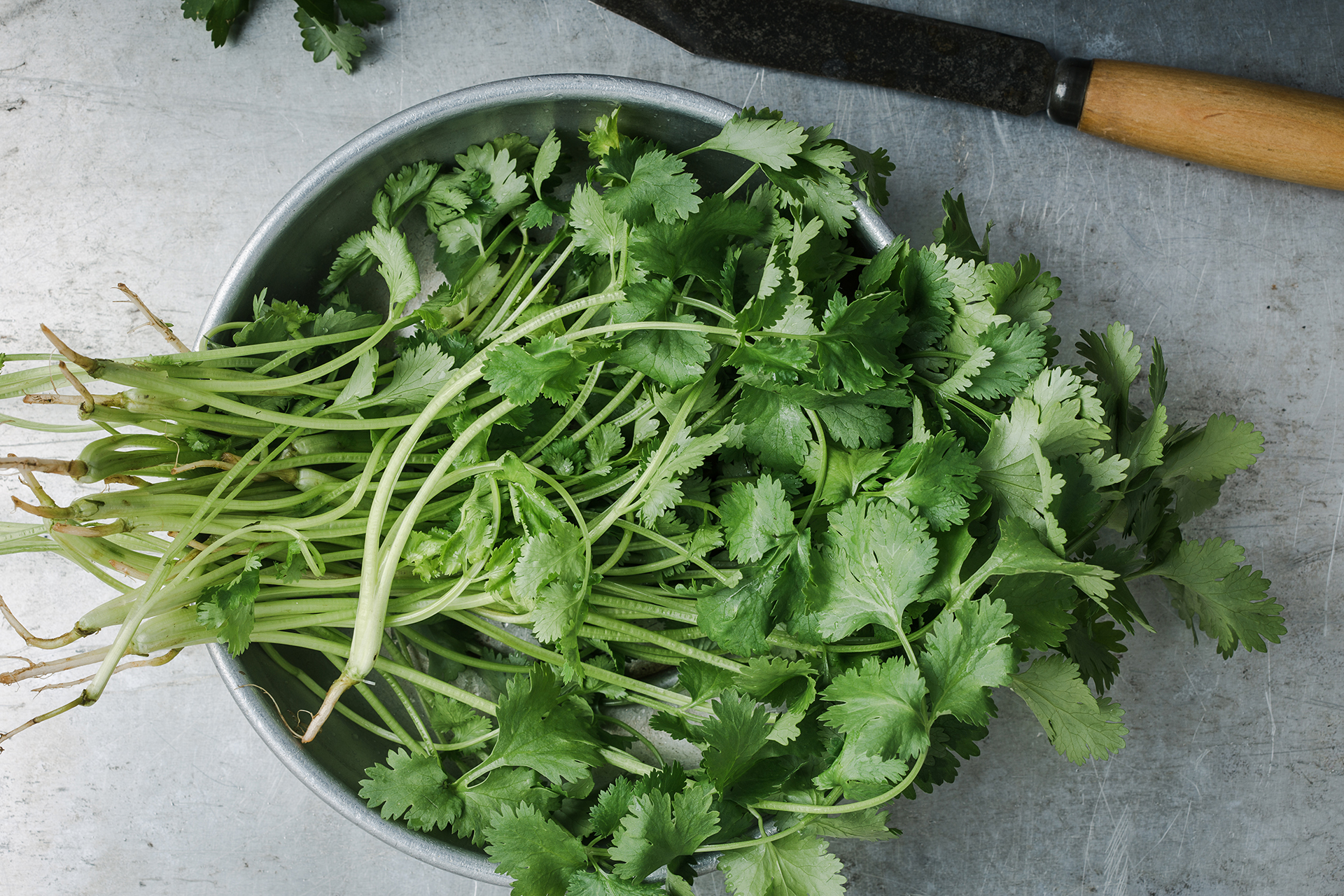
Once you've mastered how to grow cilantro, you need to know how to harvest it. The whole plant is edible, and needs harvesting at different times in order to get the most out of it.
The leaves and stems of cilantro are widely used in salads and as a garnish to curries, soups, meat and fish. Their flavor is delightfully citrusy and slightly peppery, but this is diminished through cooking, so add prior to serving.
Harvest the leaves in the morning or evening, when they are fresh and verdant, and before the plant starts flowering, which affects the taste. Use sharp scissors or a small knife to remove the stems.
Cilantro’s edible seeds are commonly known as coriander, and are wonderfully aromatic. ‘The dried seeds have a warm, spicy, citrus flavor and can be used whole, crushed in a pestle and mortar, lightly toasted or dry-fried in a pan to release their aroma and enhance their pungent spiciness, or ground to a fine powder,’ says Vicki Edgson in Amazing Edible Seeds.
You can harvest coriander seeds when they are young and green, or wait until they turn brown – both have a unique flavor, so why not experiment? Pick green seeds directly from the plant, or to harvest brown seeds, hang the flower heads upside down in a paper bag and wait for them to fall off naturally.
Delicate and lacy, cilantro flowers have a milder taste than the leaves, so work well in dishes where their subtle flavor won’t overpower. Harvest them in the morning or evening, once they have fully flowered but before they start to die. Add them at the end of cooking or as a garnish.
Even the roots of cilantro can be used for cooking. ‘Few people know that the root is edible and delicious. Its earthy flavour is a mix of the leaf and seed,’ says Judith Hann. ‘Roots should be finely chopped and added to soups, stews and curries.’
Read on to find out how to grow cilantro indoors or in pots.
How to grow cilantro indoors
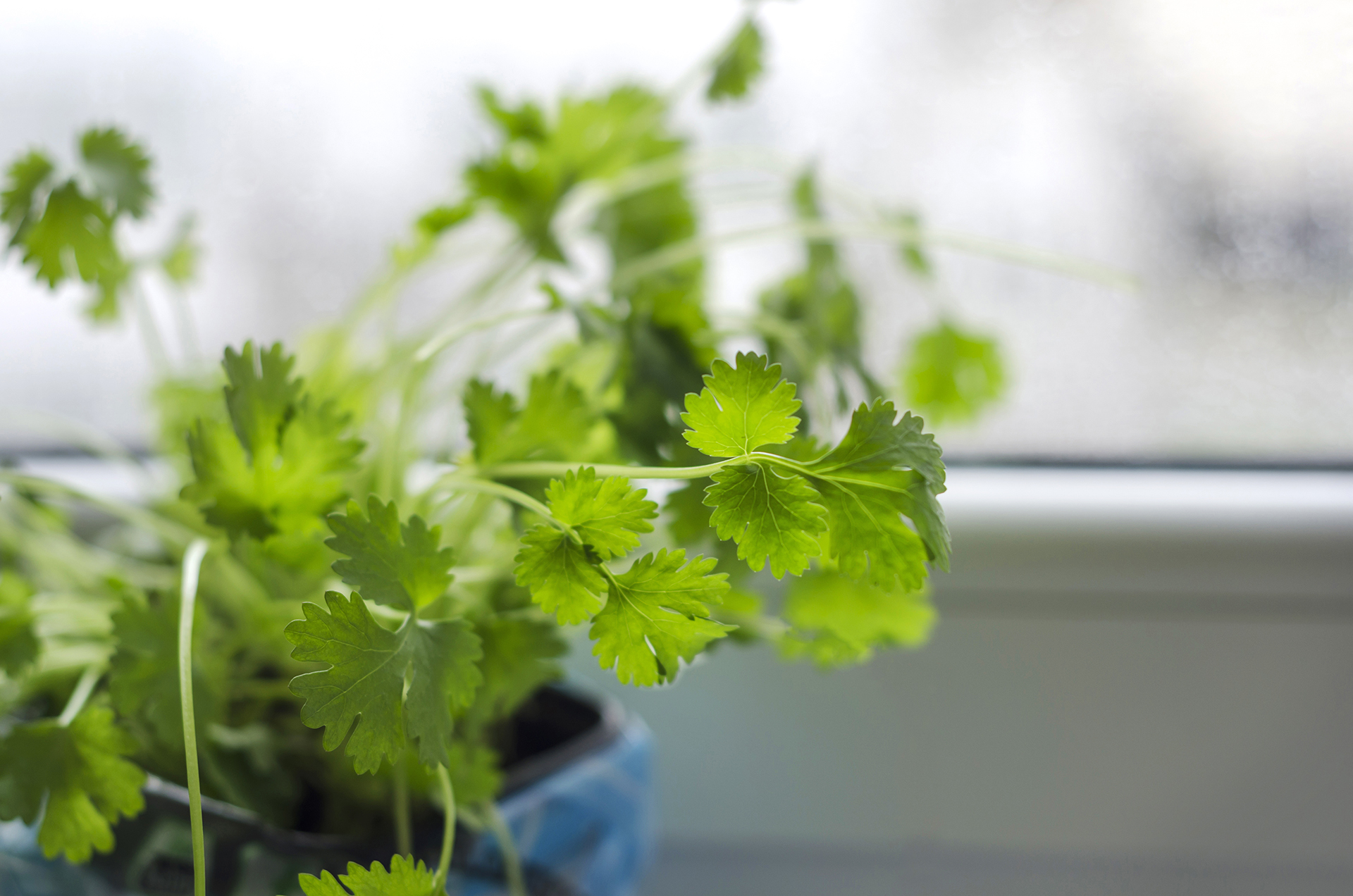
If you don't have a garden, then you need to know how to grow cilantro indoors. All you require is a bright windowsill and a generous sized pot.
The plants will need full sunlight for at least four hours a day, but if you can’t provide this naturally, then you could invest in a growing light.
As indoor-grown cilantro will be in pots, the plants won’t have access to as much root space or soil nutrients as they would outside. Therefore, the pot needs to be a good size, with drainage holes. The cilantro will also benefit from an occasional feed with liquid fertilizer.
When growing cilantro indoors, the soil’s moisture level is key, so regularly check to make sure it is still damp. Avoid overwatering, and water only when the soil starts to feel slightly dry.
How to grow cilantro in pots

It's worth learning how to grow cilantro in pots if you want to create a patio herb garden. As cilantro plants are sensitive to the high summer sun, you can move them into the shade during periods of intense heat.
You will need a large, deep container of at least eight inches diameter, and it's important not to skimp on the size. 'In a small pot of soil there will be little space for the tap root and the herb will produce few leaves before it flowers and goes to seed,' says Hann.
You only need to sow about three seeds in the pot, and thin out the weaker seedlings as they grow. Keep the soil moist, and don't let it dry out.
How to grow cilantro from cuttings

If you're struggling with how to grow cilantro from seed, then it's worth trying to grow the plant from cuttings.
When a recipe just calls for cilantro leaves, save 10-15 of the stems, and trim them to about three inches in length. You will find the new plants will grow much more quickly if the roots are still attached, but this trick also works with stem cuttings.
Insert the cuttings, spaced about three inches apart, into well-draining potting compost, then position in a partially sunny spot. Keep the soil moist, and after a few weeks your cuttings should have rooted and they can be grown on like regular plants.
Alternatively, you can place stem cuttings into a glass of water. When the plant has grown roots of at least an inch, you can transfer the cuttings to a pot.
Is cilantro a perennial?
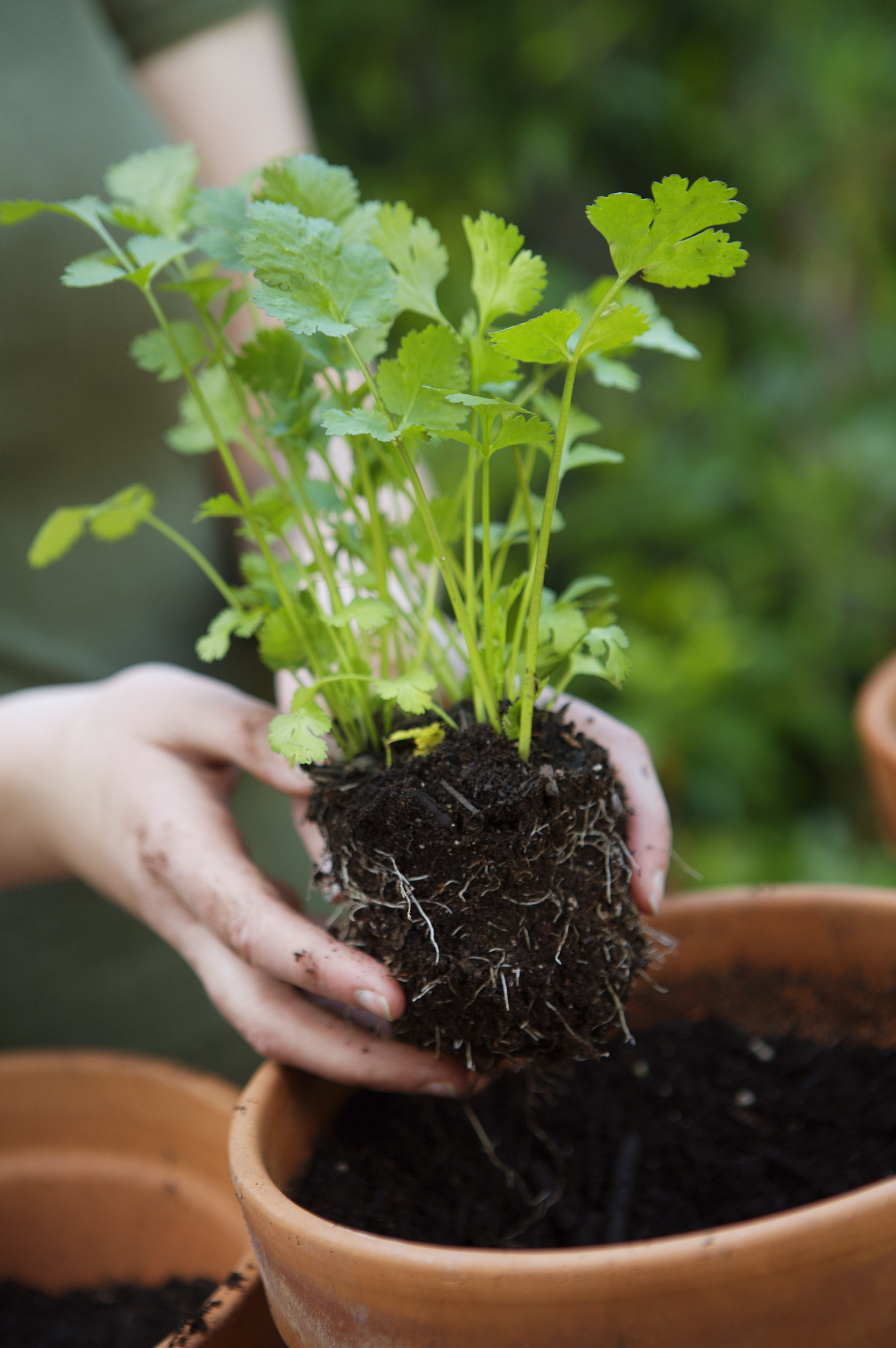
If you're putting in the effort to learn how to grow cilantro, then it's natural to seek out a perennial variety. However, cilantro is an annual herb, which means you will need to plant it in succession to extend the cropping season. In mild climates, cilantro can often survive into winter.
The good news is that cilantro does self-seed, so if you let some of the plants run their course – flowering then going to seed – you should get new seedlings in the spring.
If you're only interested in how to grow cilantro as a perennial, then consider growing culantro instead. It is a tropical tender perennial herb that has a similar – albeit much stronger – aroma and flavor to cilantro, and is best added during cooking.
Culantro is widely used in the Caribbean, and also in Puerto Rican, West Indian, and Asian cuisine.
The plant's leaves look completely different to cilantro's parsley-like greenery, as they are long and saw-edged. Culantro is a great choice for growing in a shady garden, where it is less likely to bolt.
See: Companion planting – your ultimate guide
How to maintain a cilantro plant
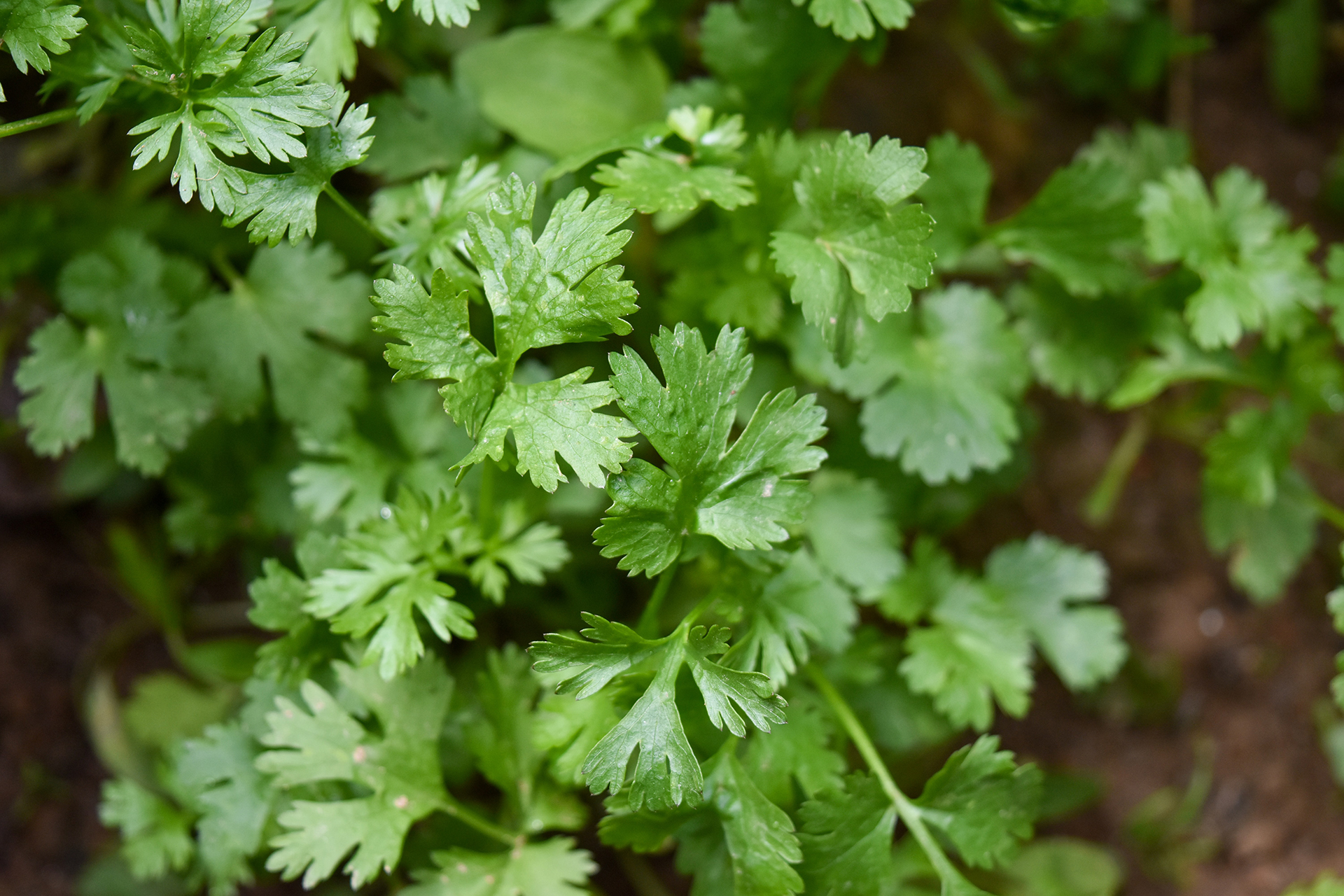
Maintaining a cilantro plant is usually straightforward. As long as it is planted in neutral to acidic well-draining soil, and not grown in the high heat of summer, then you will be off to a good start.
Simply keep the soil moist – but not waterlogged. Cilantro doesn't rely on fertilizing, but can benefit from an occasional light liquid feed.
When understanding how to grow cilantro, preventing it from bolting is usually the biggest concern. This tends to stem from growing it in the wrong conditions.
If planted in pots, move cilantro to a shadier spot in hot weather, which will reduce bolting.
See: How to grow rosemary – from cuttings and seed
Avoid transplanting cilantro where possible, as it doesn't like its roots being disturbed. Where necessary, gather plenty of soil around the roots and don't over-handle them.
The main pests affecting cilantro are slugs and snails, which can be minimized through barriers and biocontrols. Aphids and whitefly can also be problematic, so keep an eye out and use natural repellents where present.
Mildew or damping off can also affect cilantro. These issues are best managed by avoiding overcrowding and overwatering.
Most problems are easily solved, so don't let them put you off learning how to grow cilantro.

Melanie has worked in homes and gardens media for two decades. Having previously served as Editor on Period Living magazine, and worked on Homes & Gardens, Gardening Etc, Real Homes, and Homebuilding & Renovating, she is now focusing on her passion for gardening as a Senior Editor at Gardening Know How. As a keen home grower, Melanie has experimented with pretty much every type of vegetable at some point – with mixed results. Often it is the simplest things that elude you, which may explain why she just can't seem to master zucchinis.